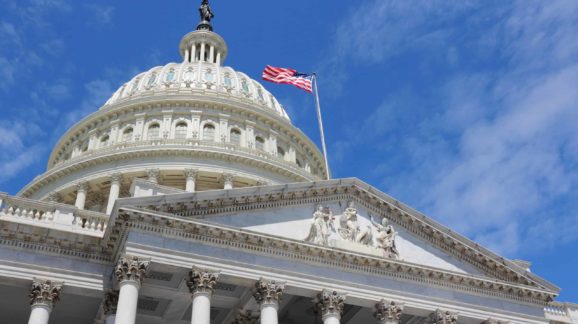Congress, Follow the White House’s Lead on CFPB Reform
Hidden within a single line of a statistical table in President Trump’s 2019 budget is one of the most drastic reform proposals offered up in years. While all the focus has been on infrastructure and military spending, page 140 of the FY19 budget casually outlines the potential quashing of the Consumer Financial Protection Bureau, one of the most controversial government agencies.
Under the proposal, the CFPB would be put under congressional appropriations and then have its funding ratcheted down over the next few years. By fiscal year 2022, Trump’s budget estimates a savings of $672 million from the bureau — more than the CFPB’s entire budget for this year.
While only a proposal, the president’s budget is one of the strongest indications yet that the White House is serious about reforming the CFPB. This is a good sign. The bureau has been empowered to wreak havoc on American businesses and consumers with no accountability to Congress or the president for far too long.
Take the recently finalized small-dollar loan rule. Around 12 million Americans rely on these loans each year to get from paycheck to paycheck, but the CFPB’s rule would eliminate up to 80 percent of all lenders. This despite the fact that 95 percent of all borrowers say they value the option to take out a loan. Eliminating valued financial products is not “consumer protection.”
The Obama administration designed the CFPB to be perhaps the most powerful, unaccountable regulatory agency in U.S. history. Its czar-like, independent director effectively prevents even the U.S. president from overseeing the bureau. It is also exempt from the authority of the legislative branch because, unlike executive agencies like the Environmental Protection Agency or Food and Drug Administration, its funding is overseen by the Federal Reserve, not Congress.
This unique and extreme independence has allowed the CFPB to spend taxpayer dollars with reckless abandon. How else would a government agency be able to get away with spending $216 million on a building renovation initially estimated to cost just $55 million? The renovation, which includes plans for a four-story glass staircase, a two-story waterfall, and a sunken garden, costs more per square foot than the lavish Trump Tower. When one Congresswoman inquired as to who authorized the renovation, the Obama-era director responded, “Why does that matter to you?”
Even worse is the CFPB’s approach to regulation. The bureau has become notorious for aggressively shaking down financial firms with little to no evidence of wrongdoing. For example, since 2013 the CFPB has illegally led an expedition to charge auto-lending companies with racial discrimination. The evidence the CFPB gathered, however, was overwhelmingly exaggerated, with internal staff emails admitting that the bureau’s claims would not hold up in court. Despite this, the CFPB forced multiple companies to make settlements. But how do you refund borrowers for racial discrimination when you have no evidence? The bureau’s answer was simply to guess. This absurdly resulted in white consumers receiving refunds for supposed racial discrimination against them as African-Americans.
It’s no surprise the Trump administration has not taken these actions lightly. While the media focused on the president’s budget release, the now Republican-led CFPB released its strategic plan for the next 5 years the same day. Turning away from the aggressive enforcement and lavish spending of the previous administration, the CFPB is now committed to “free, innovative, competitive, and transparent consumer finance markets.” The plan likewise included a focus on deregulation, promising to remove “outdated, unnecessary, or unduly burdensome regulations.” These common-sense improvements are a drastic change from the past, during which the CFPB sought to outlaw financial products in order to protect consumers from themselves, as it has done with payday loans.
The president’s budget and the CFPB’s strategic plan show that the White House is serious about reining in the lawless agency. Now, all that is needed is for Congress to follow suit. Despite a slender, single-vote Republican majority in the Senate, CFPB reform is still possible. Because abolishing or significantly reforming the bureau would provide enormous budgetary savings, the budget reconciliation process — which requires only a simple majority vote in both houses — provides a viable pathway to legislation. With the White House paving the way for CFPB reform, Congress would be wise to follow.
